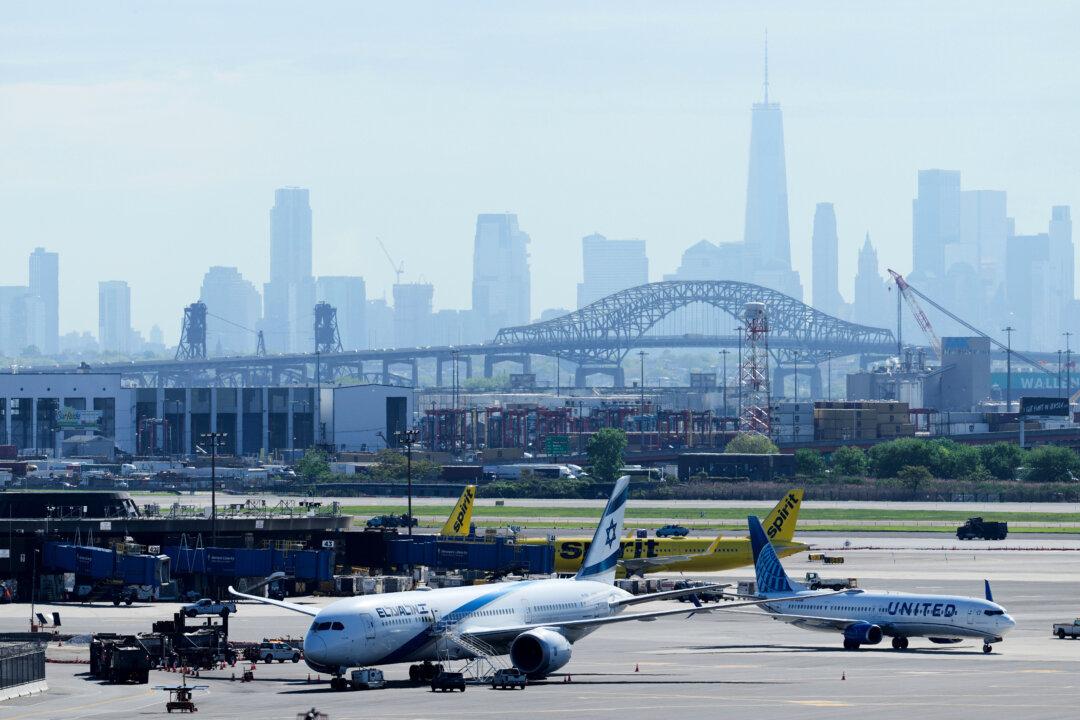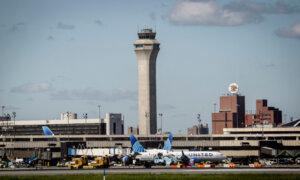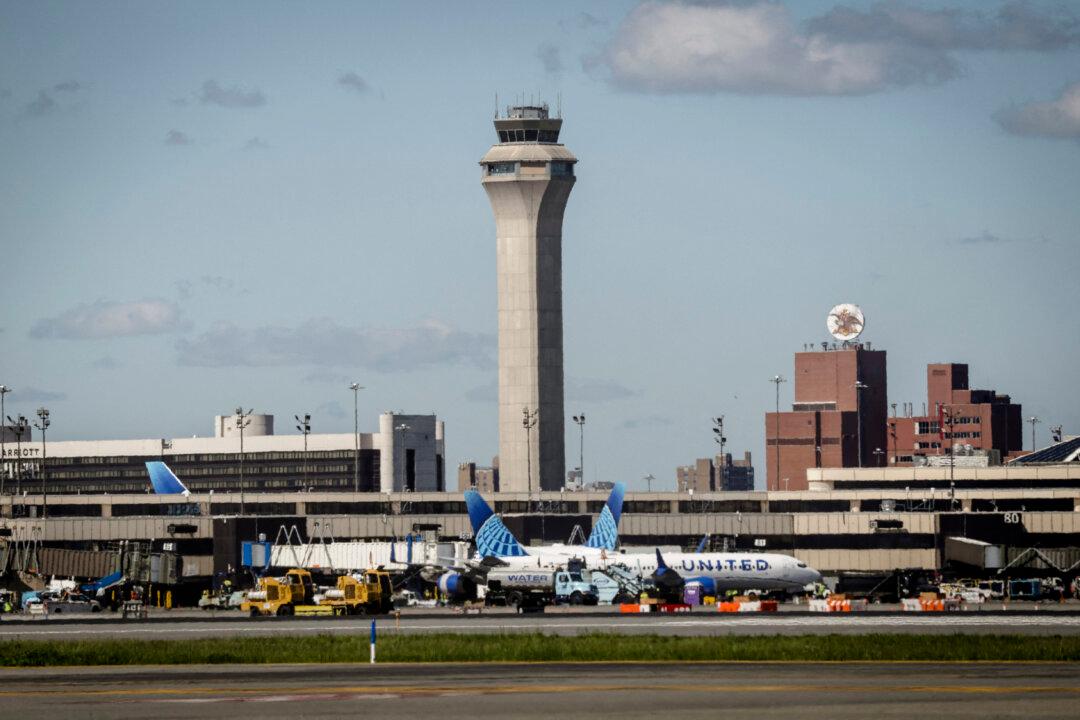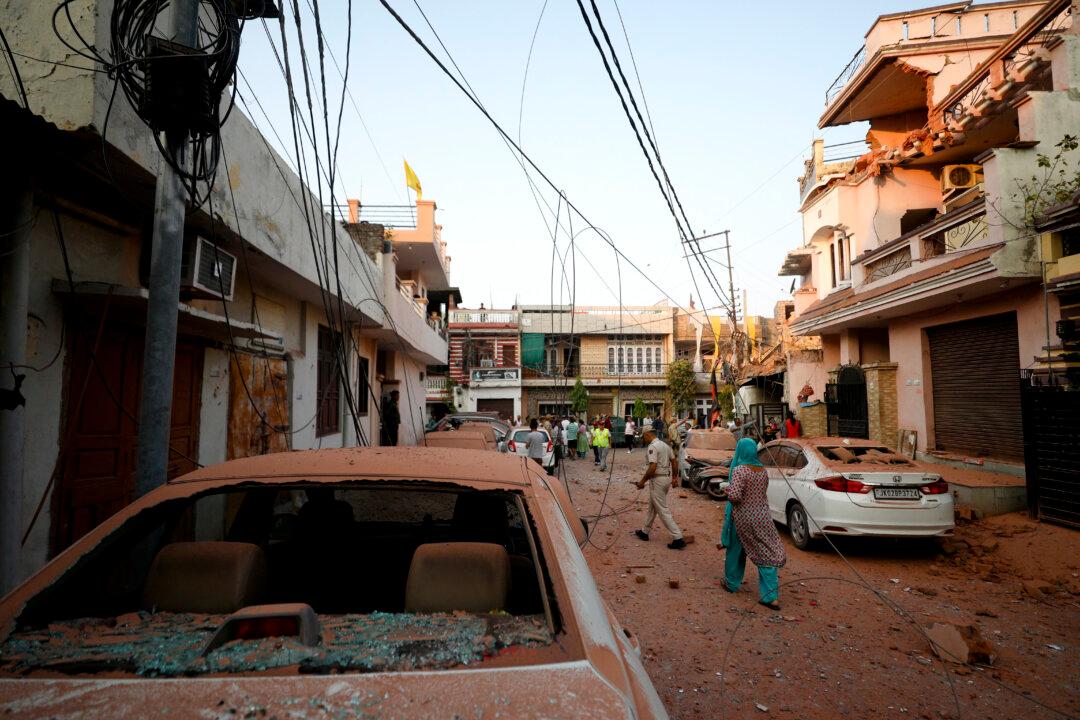The Department of Transportation will request an investigation into the Biden administration’s decision last year to move the telecommunications system that handles Newark’s air traffic from New York to Philadelphia, Transportation Secretary Sean Duffy said on May 12.
While speaking at a May 12 press conference with Chris Rocheleau, acting administrator of the Federal Aviation Administration (FAA), Duffy said the recent air traffic control equipment outages at Newark Liberty International Airport were due to a decision made in July 2024 by the Biden administration.
At the time, Transportation Secretary Pete Buttigieg decided to reassign control of the Newark-area airspace sector from New York’s Terminal Radar Approach Control (TRACON) to the Philadelphia TRACON. The FAA previously defended the move as an attempt to alleviate short staffing at the New York facility.
On May 12, Duffy said that the decision was particularly dangerous because the Philadelphia TRACON has to be fed data from New York through old, copper data lines, which were already vulnerable.
Duffy described it as adding “more risk to the system” without “addressing the underlying infrastructure.”
Duffy said the FAA implemented a software patch to fix the problem that had led to the three communications failures at Newark airport over the past two weeks. The first incident took place on April 28 when air traffic control lost all contact with planes for 30 seconds, causing some controllers to take trauma leave.
Since then, the FAA has slowed traffic in and out of Newark until it can ensure safety, Rocheleau said at the press conference. For now, the agency is only allowing 24 to 28 departures and arrivals per hour at Liberty, he said.
In addition to the software patch, Duffy said the FAA has already replaced copper communication lines with fiber optics at Newark, John F. Kennedy International Airport, and LaGuardia Airport, but that subsequent testing will likely take up to two weeks before the FAA can “flip the switch and make them live.”
The secretary said he huddled with data contractor Verizon to add three new telecommunication connections between New York and Philadelphia to “provide more high-speed reliability and redundancy.”
Duffy’s also going to request an Office of Inspector General investigation on the Biden administration’s decision to move the control of the Newark and New York-area airspace to the Philadelphia TRACON, which he blamed for the three air traffic control equipment failures over the two-week span.
“There were issues in October and November under Biden and Buttigieg that would have highlighted to the prior administration that the underlying hardware would continue to cause problems,” Duffy said.
“That, along with their overall neglect of our whole aviation system, and the aging issues that we’ve highlighted over the course of the last several weeks, were clear mistakes of their administration.”
The secretary is also hosting a delay reduction meeting on May 14 with the FAA and all airlines that service Newark to minimize inconvenience to travelers in the face of the ongoing traffic reductions.
“Families shouldn’t have to wait four or five hours for a flight that never takes off. By lowering the number of flights, we can ensure the ones that are kept do actually take off, and they do actually land,” Duffy said.
Rocheleau said the FAA has initiated an emergency task force composed of industry experts, FAA experts, and representatives from Verizon and the L3Harris Corporation, an information technology defense contractor, to make sure travel is safe in and out of Newark.
That task force will be involved in the May 14 meeting, the acting administrator said.
“We’re working with the airlines and the airport, the Port Authority of New York [and] New Jersey, to make sure that the travel into Newark this summer is safe,” Rocheleau said.
Duffy emphasized that since multiple airports and control towers need immediate safety upgrades, the Transportation Department and the FAA will likely “have to do more than one location at a time.”
“But ... priority No. 1 is going to be Newark,” he said.







